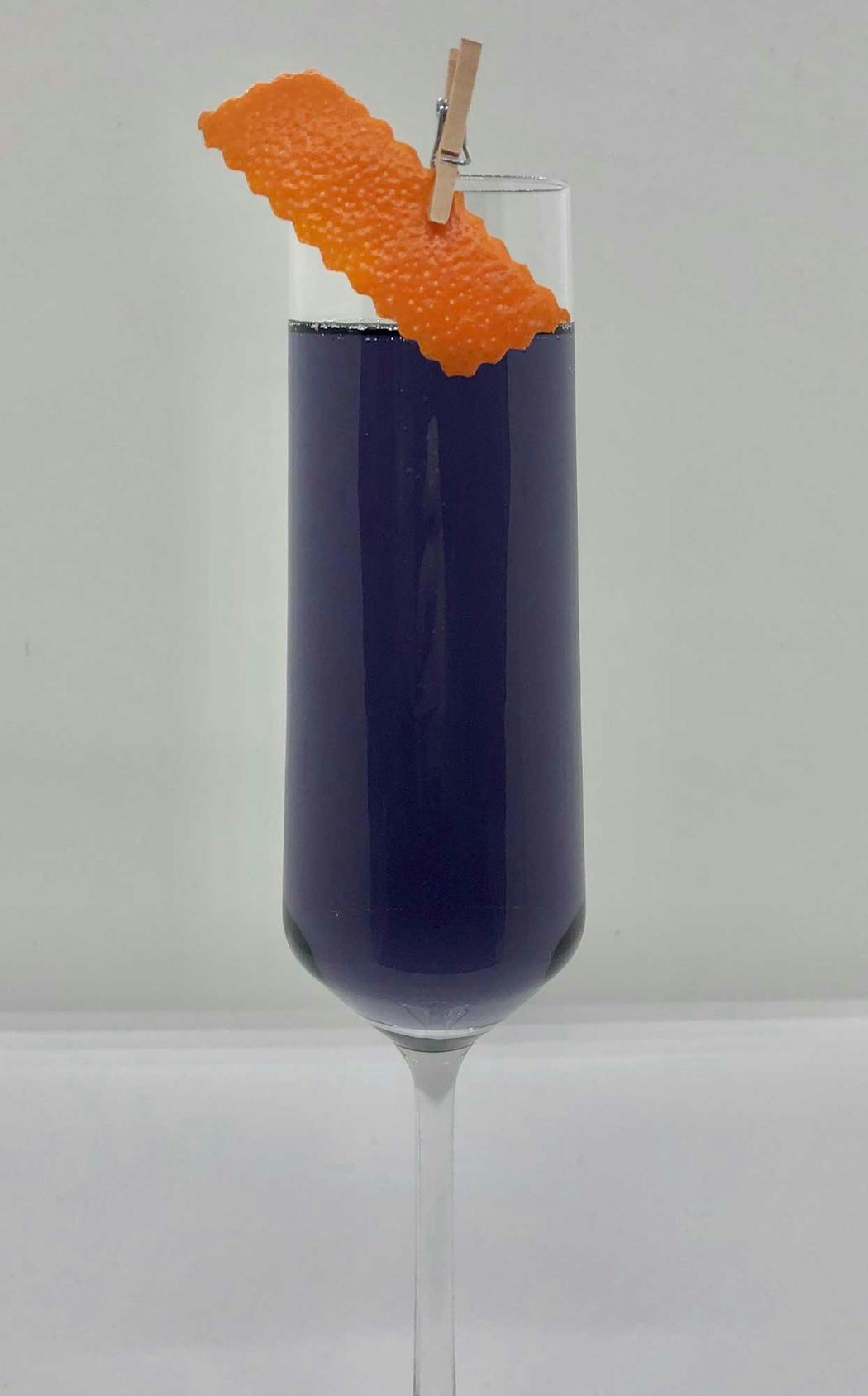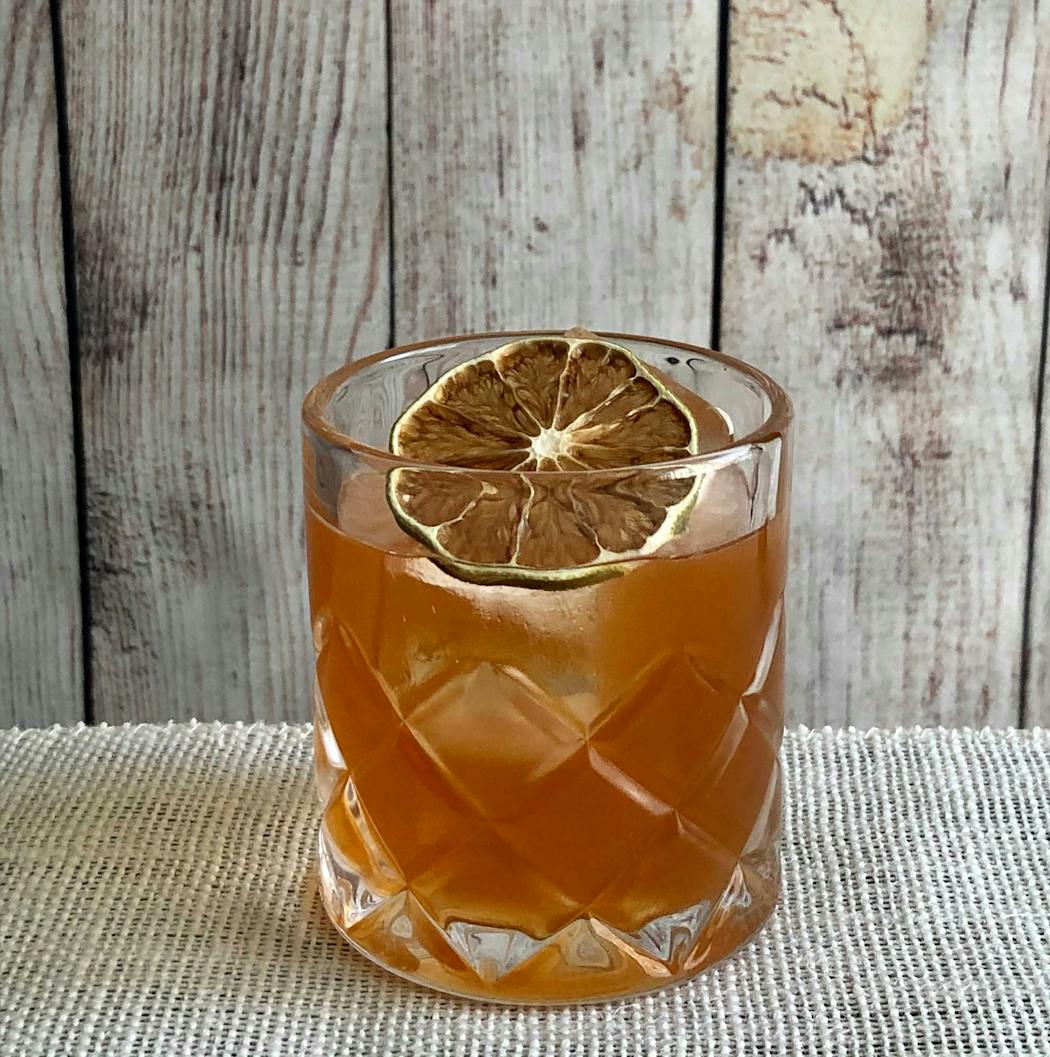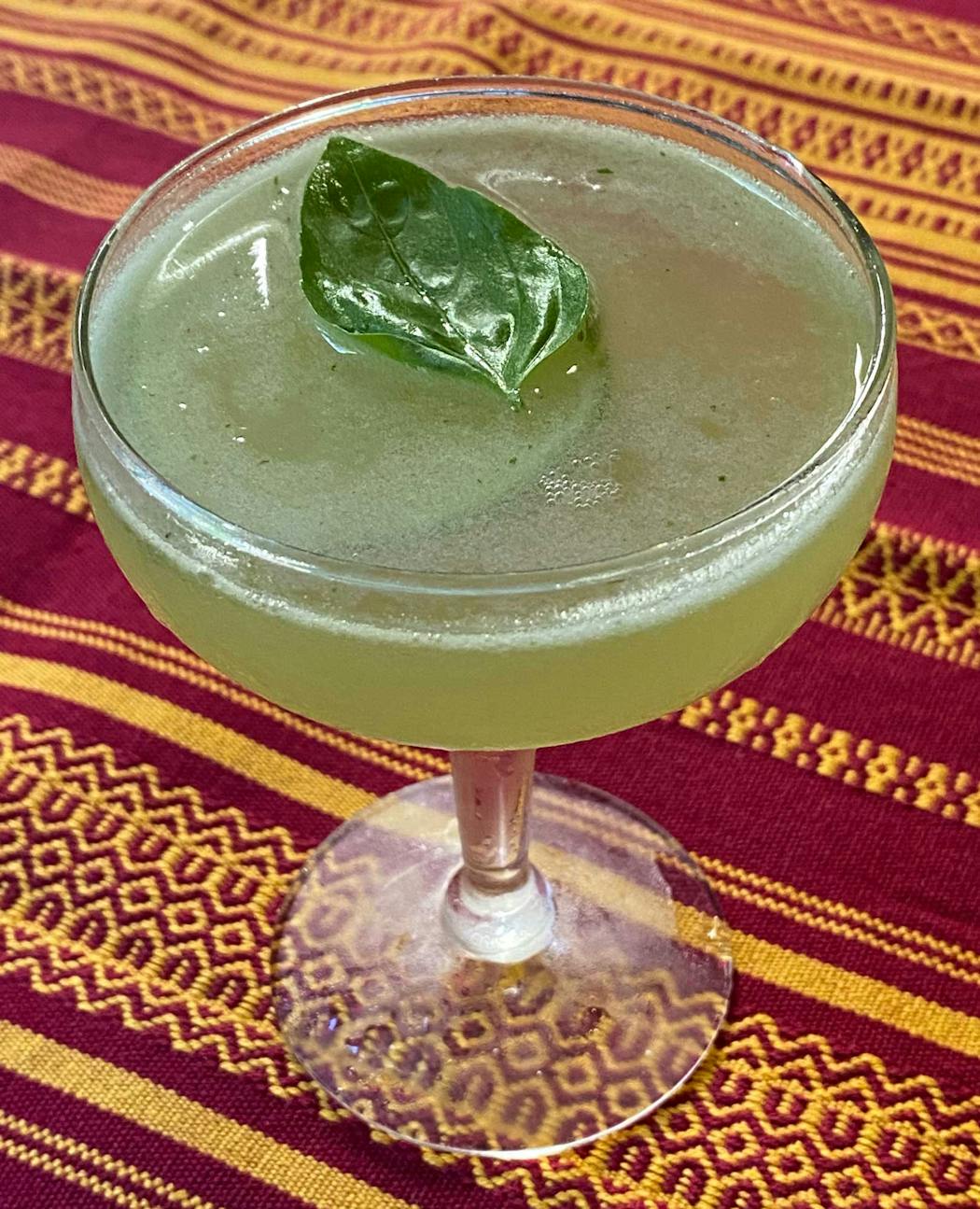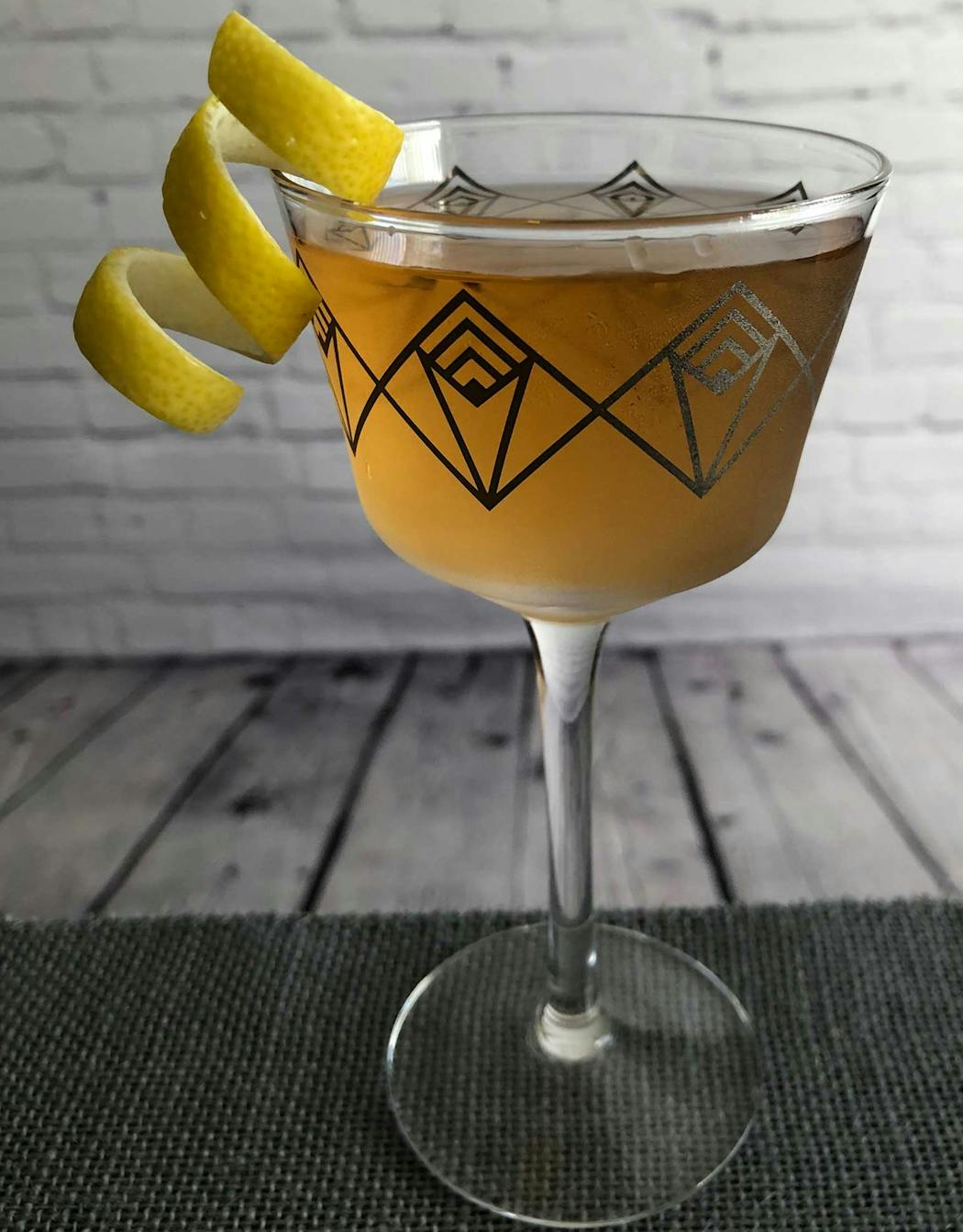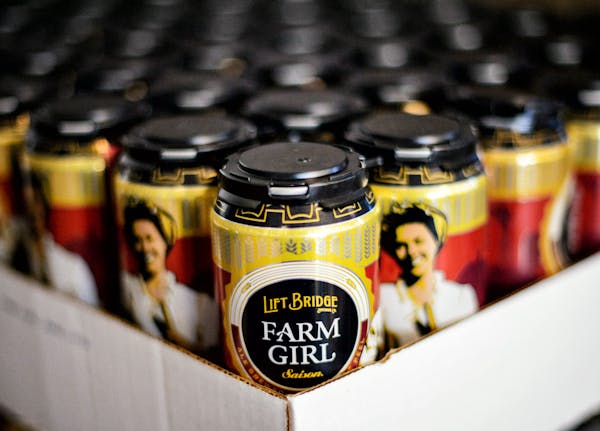When the craft-cocktail craze unfolded and then exploded, importer Eric Seed didn't need to scramble for new products. And when the more recent low-alcohol movement hit, the Edina resident was just as well situated.
Since launching Haus Alpenz in 2005, Seed has been boldly going where no spirits-monger had gone before, sussing out an array of esoteric libations from around the world. He started with aromatized liqueurs — Meteor Bar owner Robb Jones said Seed is "considered the Indiana Jones of these lost spirits" — and then took a deeper dive into fortified wines and a bit of booze.
"Eric was way ahead of his time," said Trish Gavin, a veteran Twin Cities beverage director. "Throughout the years he has been such a friend to bartenders. He really paved the way, with what he brought in and with a lot of education."
Since making the call to pursue potables, relinquishing a comfortable job in Cargill's financial division — "my wife said to do this before we have kids," he said — Seed has built a portfolio with scores of brands and a staff of 18, a third of them based in Minnesota.
Searching far and wide for these liquid assets while echoing his Minnesota roots, Seed literally sniffed out obscure offerings from remote regions, mostly in Europe.
"We started the business with a pine liqueur, and we still have a passion for the smells and taste of the outdoors," he said. "The appeal of key elements of nature is timeless, so having a taste that is familiar can have broad appeal, no matter the place or setting.
"Things that smell like the wheat or berries that grow around here, there's an easy association. 'This smells like where I've been or wanted to go, this smells like Up North.' It could be pine, the smell of a campfire or something that smells like the fields after a rain, verdant and green."
Still, being "interesting" or "different" — terms Minnesotans often employ for something they don't care for — is not the primary goal.
"[Our products] have to be approachable to a broad audience and useful in a variety of ways," Seed said. "And they need to be affordable and ideally can be used with relative ease at home."
Mission accomplished, according to Jones. "For a long time the realm of aromatized wines and bitter [liqueurs] weren't accessible. Today they are considered mainstays. The idea of vermouth that was actually delicious wasn't here till Eric brought it in. I don't think there's a bar in the country that doesn't have Haus Alpenz.
"[Products from Haus Alpenz] have so much flavor and are affordable. That's the best part. You don't have to worry about spending more on the vermouth than the gin."
Gavin concurs. "The breadth of the portfolio and the depth are just amazing," she said. "Everything speaks for itself beautifully. Each has its own nuance — and a through line, a beginning, middle and end without having to supplement it. That comes from somebody who knows what they want when they're buying."
Enlightening others
In climbing (almost) every mountain in the Alps, Seed not only unearthed distinctive spirits, but also forged relationships with families that often had been making their nectars for generations. Meanwhile, such exotic elixirs would become major building blocks of the craft-cocktail crusade that continues to this day.
Timing might not be everything, but in this case Seed and Company implemented the Buddhist aphorism, "when the student is ready, the teacher will appear." Budding mixmasters "were fortunate to be really educated, and to have Eric here," said Jones, who first worked with Seed at Bradstreet Craftshouse and Spoon and Stable before opening Meteor, where more than 60% of the cocktails include a Haus Alpenz-purveyed brand. "His team can reach people on the nerdy side."
While Seed continued to grow his staff, expending much of their efforts on educating and sharing their learnings, Seed brought in widely respected wine-trade veteran J Henahan. "I had J come in to train my staff [at Khâluna] on all things aromatized and fortified," Gavin noted. "He really gave us so much fodder."
In similar fashion, "I don't think the lower ABV [alcohol by volume] movement would be happening without Eric's products," Jones said, adding that his favorite Manhattan is now mostly vermouth with a bit of whiskey.
What's old is new again
In the course of assembling an inventory of little-known liqueurs, Seed also came across a beverage that hadn't been seen on these shores since before Prohibition. Hayman's Old Tom Gin, enormously popular in its time, is softer and more approachable, with less juniper and more cinnamon than "regular" gin. And perhaps even more versatile.
"When we reintroduced Old Tom Gin," Seed said, "our thought was for consumers to rediscover and enjoy classics such as the Martinez [predecessor to the Martini], Tom Collins, French 75 or Ramos Gin Fizz. We know now it's a go-to favorite for those making their gin-and-tonic with light or diet tonic."
In recent years, Seed has found another optimum fit in the lower-alcohol vein: fortified wines such as Madeira, Marsala, Banyuls and Carcavelos. These wines have had spirits added and generally are aged for years in barrels. While many Haus Alpenz offerings work well as aperitifs, these oxidative wines can be excellent post-meal digestifs.
"It makes sense that Madeira is catching on with the whiskey drinker," Seed said. "They might say 'instead of Macallan, I'll have an H&H Terrantez 20 Year Madeira.' It's been wonderful to see a new generation exploring and enjoying Madeira. In some ways it's not surprising with a backdrop of the whiskey revival and the broadening appeal for the taste of age."
While whiskey lovers have found that portal to less-intoxicating options, Jones said wine enthusiasts have been embracing less potent potions that come in closer to the 10% to 15% alcohol level than the 33% or more found in standard cocktails.
Often it's not just the ABV that is reduced. "Sometimes it's less low-alcohol than lower-calorie, lower-sugar," Seed said. "It mirrors the non-drink consumption of some consumers. You're seeing more spritzes on menus and cocktails becoming drier, less sickly-sweet drinks."
Even as its selections grow and diversify, Haus Alpenz's driving force remains lower-alcohol stock that can be used in simple cocktails or as stand-alones. Alluring aromas abound, but of course the No. 1 goal is flavor. After all, getting consumers to try something is one thing; having them come back for more is another matter entirely.
"We're not in the business of creating shelf decorations," Seed said. "If things are delicious, people tend to like them."
Coming to terms
Peruse Haus Alpenz's offerings and you'll likely run into a type of liqueur that is unfamiliar. Here's a primer:
Amaro: A bitter, herby Italian digestif/aperitif, which for many works best as a cocktail component because of its harshness. An integral element in Negronis (usually with gin and sweet vermouth), it also plays well with tequila.
Americano: Not named for us, but from the Italian word "amaricante," meaning "bittered." Comes in red and white renditions, both tasty with a splash of soda and a slice of citrus. The cocktail called Americano adds sweet vermouth and soda water.
Cappelletti: Another semi-astringent offering, but drier on the finish, this is great in a Negroni but also in whiskey drinks and even mixed with beer.
Eau-de-vie: Living up to its translation ("water of life"), this brandy is made by fermenting and then distilling fruit. Works "neat" at room temp or with a bit of ice if preferred, or in a Tom Collins or mimosa.
Fortified wines: These are made by adding grape spirit to stop the fermentation process. The earlier the addition, the sweeter the resulting wine. Marsala (from Sicily), Banyuls (from southern France) and Madeira (from a Portuguese island of the same name) are examples in the Haus Alpenz portfolio. Also superb in pan sauces.
Génépy: Fresh Alpine aromas and flavors have made this an après-ski staple for centuries. Best on the rocks, perhaps with a splash of tonic, or with chocolate.
Velvet Falernum: A rum-based liqueur from Barbados checking in at 11% alcohol, this can augment rum-based drinks and is well suited for punches, including sangria.
Mix 'em up
Any vermouth carried by Haus Alpenz is swell with tonic. Here are a few more simple cocktails. For more — much more — information and recipes, go to alpenz.com/recipes.
Violette Royale
Makes 1.
• 2 tbsp. (1 oz.) Rothman & Winter Crème de Violette
• 1⁄2 c. (4 oz.) sparkling wine
Directions
Mix ingredients in a flute. Garnish with a grapefruit peel and serve.
Bajan Legend
Makes 1.
• 4 tbsp. (2 oz.) Barbados rum
• 2 tbsp. (1 oz.) John D. Taylor's Velvet Falernum
• 2 dashes Angostura bitters
Directions
Mix together ingredients with ice and stir; strain into a double rocks glass. Garnish with a lime wheel and serve.
Improved Vodka Tonic
Makes 1.
• 4 tbsp. (2 oz.) vodka
• 1 tbsp. (1/2 oz.) Dolin Blanc Vermouth de Chambéry
• 1 1⁄2 tsp. (1/4 oz.) lime juice
• 6 tbsp. (3 oz.) tonic water
Directions
Mix the ingredients in a collins glass filled with ice. Garnish with a lime wheel.
Après Ski
Makes 1.
• 4 tbsp. (2 oz.) Dolin Génépy le Chamois Liqueur
• 4 to 6 tbsp. (2 to 4 oz.) tonic water
Directions
Pour the ingredients into a highball glass filled with ice. Garnish with a lemon peel and serve.
Basil South Side
Serves 1.
• 2 tbsp. (1 oz.) blanco tequila
• 2 tbsp. (1 oz.) Salers Gentian Apéritif
• 2 tbsp. (1 oz.) lime juice
• 6 basil leaves
Directions
Place ingredients in a cocktail shaker with ice. Shake and strain into a coupe glass. Garnish with a lime wheel and basil leaf and serve.
Pear Rickey
Makes 1.
• 6 tbsp. (3 oz.) Purkhart Pear Williams Eau-de-Vie
• 2 tbsp. (1 oz.) lime juice
• 2 tbsp. (1 oz.) simple syrup
• 3⁄4 c. (6 oz.) club soda
Directions
Pour the ingredients into a collins glass filled with ice. Stir gently. Garnish with lime wheel and serve.
Amer Frontière
Makes 1.
• 3 tbsp. (1.5 oz.) Bonal Gentiane-Quina
• 1 c. (8 oz.) lager
• 2 dashes orange bitters
Directions
Pour the ingredients into a collins glass. Garnish with an orange peel and serve.
Prince Henry's Reed
Makes 1.
• 3 tbsp. (1.5 oz.) Henriques & Henriques Madeira
• 3 tbsp. (1.5 oz.) Dolin Dry Vermouth de Chambéry
• 1 dash orange bitters
Directions
Stir with ice and strain into a coupe glass. Garnish with a lemon peel and serve.
